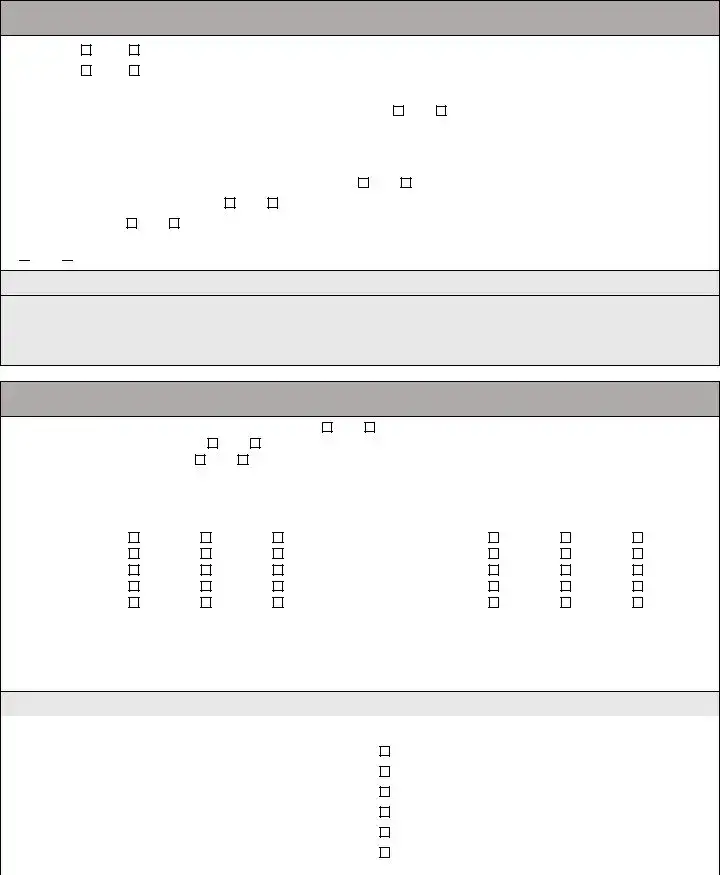What is a 4-Point Inspection Form?
A 4-Point Inspection Form is a document used to assess the condition of four main systems in a property: the roof, electrical system, HVAC (heating, ventilation, and air conditioning), and plumbing. This form provides essential information needed for insurance underwriting and helps determine the property's insurability. A licensed inspector must complete it to ensure accuracy and reliability.
Who needs to complete the 4-Point Inspection Form?
A Florida-licensed inspector is required to complete, sign, and date the 4-Point Inspection Form. This ensures that the inspection meets state standards and guidelines. The form should not be signed by anyone who is not licensed or qualified in Florida.
What information is required for each system on the form?
Each section of the form asks for specific details about the systems. For the roof, inspectors note the material type, age, and any visible damage. The electrical section requires information on the type of panel, amperage, and any hazards present. The HVAC section looks at the age of the system and if it’s functioning properly. Lastly, plumbing details cover any leaks, the condition of fixtures, and piping material. Photographs are also necessary for each system to provide visual verification of the inspector's findings.
Why are photographs necessary with the inspection form?
Photos are vital for supporting the information presented in the 4-Point Inspection Form. They help visualize the condition of the property's systems and ensure that the inspector has thoroughly documented their findings. The required photos include each side of the dwelling, each slope of the roof, and specific views of the plumbing and electrical systems.
What happens if the inspector finds a problem during the inspection?
If any hazards or deficiencies are found during the inspection, the inspector must document them in detail on the form. Additionally, these issues could affect the property's insurability. It's crucial for agents and property owners to address any serious problems before submitting the inspection form to an insurance company.
Can a non-licensed person fill out the form?
No, only a Florida-licensed inspector can complete the 4-Point Inspection Form. This rule ensures that the inspection is accurate and meets all legal requirements. If someone attempts to fill out the form without the proper licensure, the insurance application may be denied.
What if repairs are needed after the inspection?
If repairs are needed, it’s essential to have them completed by a qualified professional. After repairs, a new inspection may be necessary to confirm that the property now meets the required standards for insurance. Always keep documentation of any work done for future evaluations and inspections.
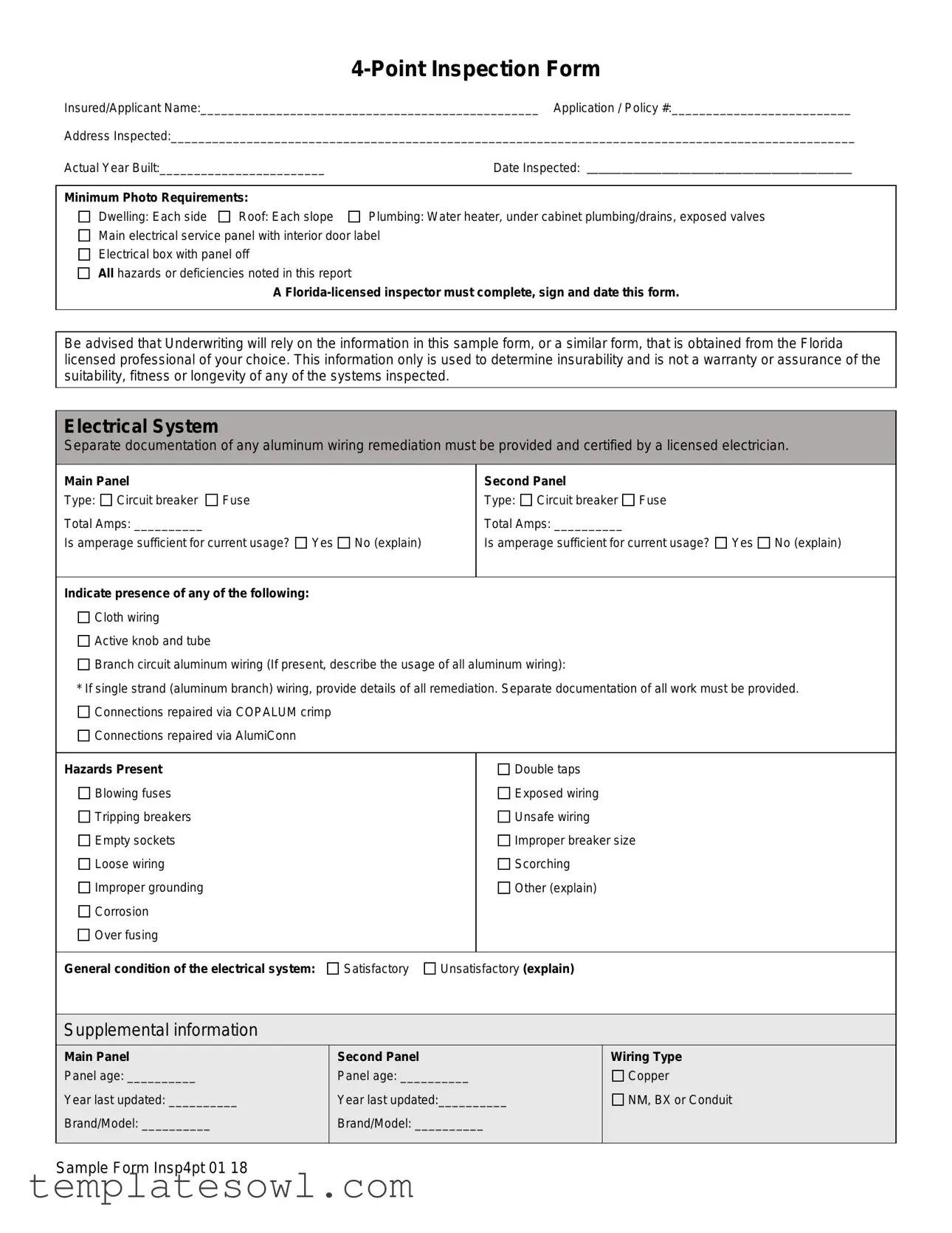
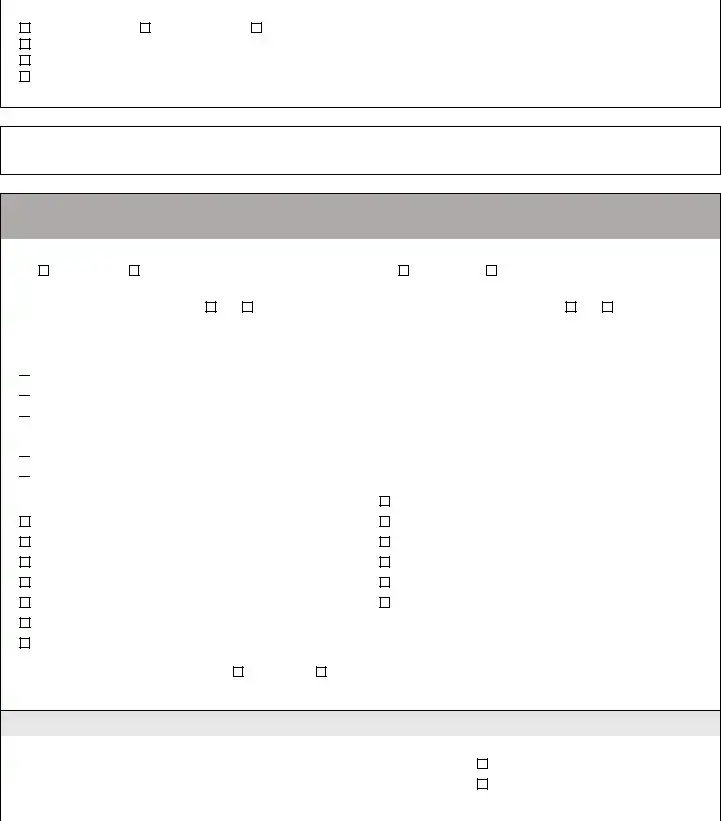

 Cloth wiring
Cloth wiring
 Active knob and tube
Active knob and tube
 Branch circuit aluminum wiring (If present, describe the usage of all aluminum wiring):
Branch circuit aluminum wiring (If present, describe the usage of all aluminum wiring):
 Connections repaired via COPALUM crimp
Connections repaired via COPALUM crimp 
 Connections repaired via AlumiConn
Connections repaired via AlumiConn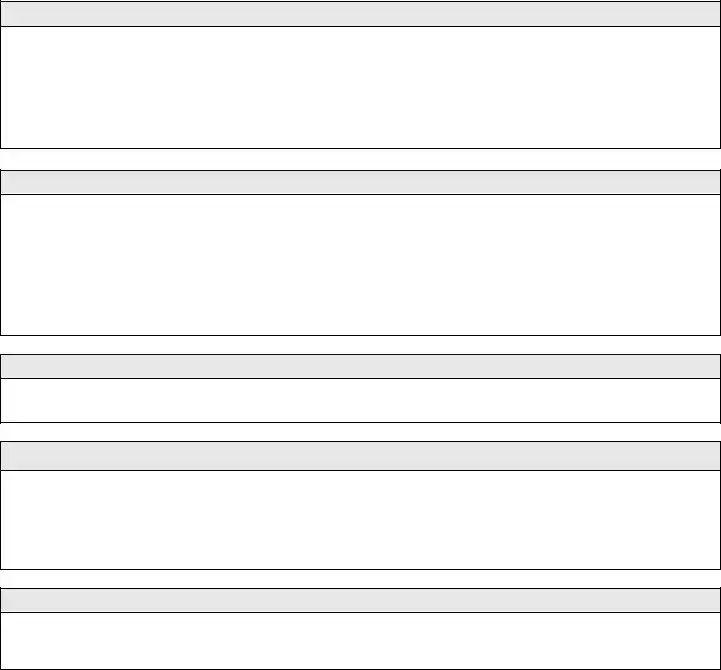

 Yes
Yes 
 No
No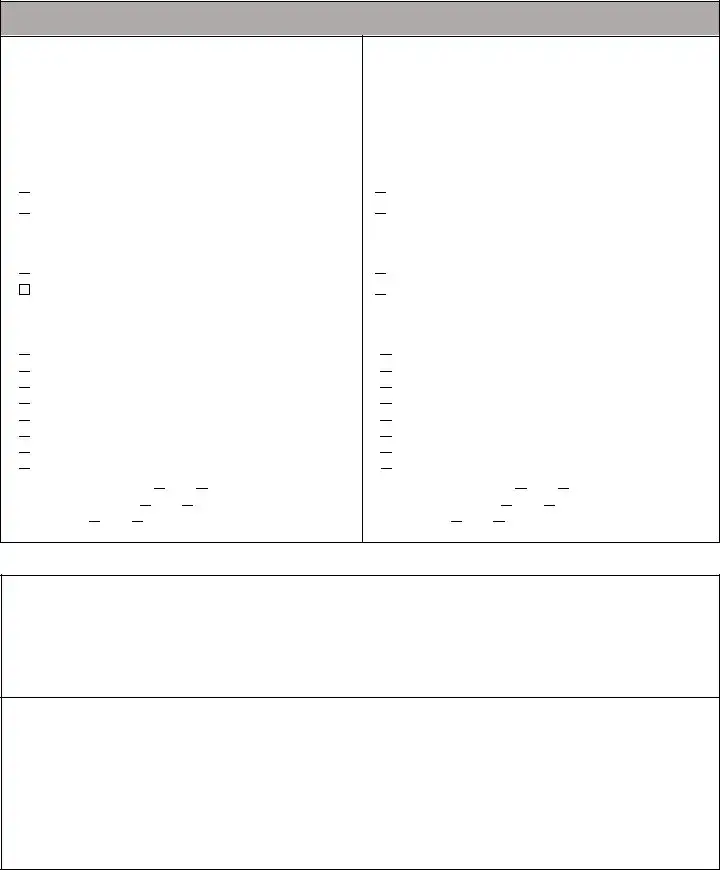

 Full replacement
Full replacement 
 Partial replacement
Partial replacement
 Satisfactory
Satisfactory
 Cracking
Cracking
 Cupping/curling
Cupping/curling
 Excessive granule loss
Excessive granule loss
 Exposed asphalt
Exposed asphalt
 Exposed felt
Exposed felt
 Missing/loose/cracked tabs or tiles
Missing/loose/cracked tabs or tiles
 Soft spots in decking
Soft spots in decking 
 Visible hail damage
Visible hail damage


 Yes
Yes  No
No
 Yes
Yes 
 No
No
 Full replacement
Full replacement 
 Partial replacement
Partial replacement Satisfactory
Satisfactory Unsatisfactory
Unsatisfactory 
 Cracking
Cracking
 Cupping/curling
Cupping/curling
 Excessive granule loss
Excessive granule loss
 Exposed asphalt
Exposed asphalt
 Exposed felt
Exposed felt
 Missing/loose/cracked tabs or tiles
Missing/loose/cracked tabs or tiles
 Soft spots in decking
Soft spots in decking 
 Visible hail damage
Visible hail damage


 Yes
Yes  No
No
 Yes
Yes 
 No
No